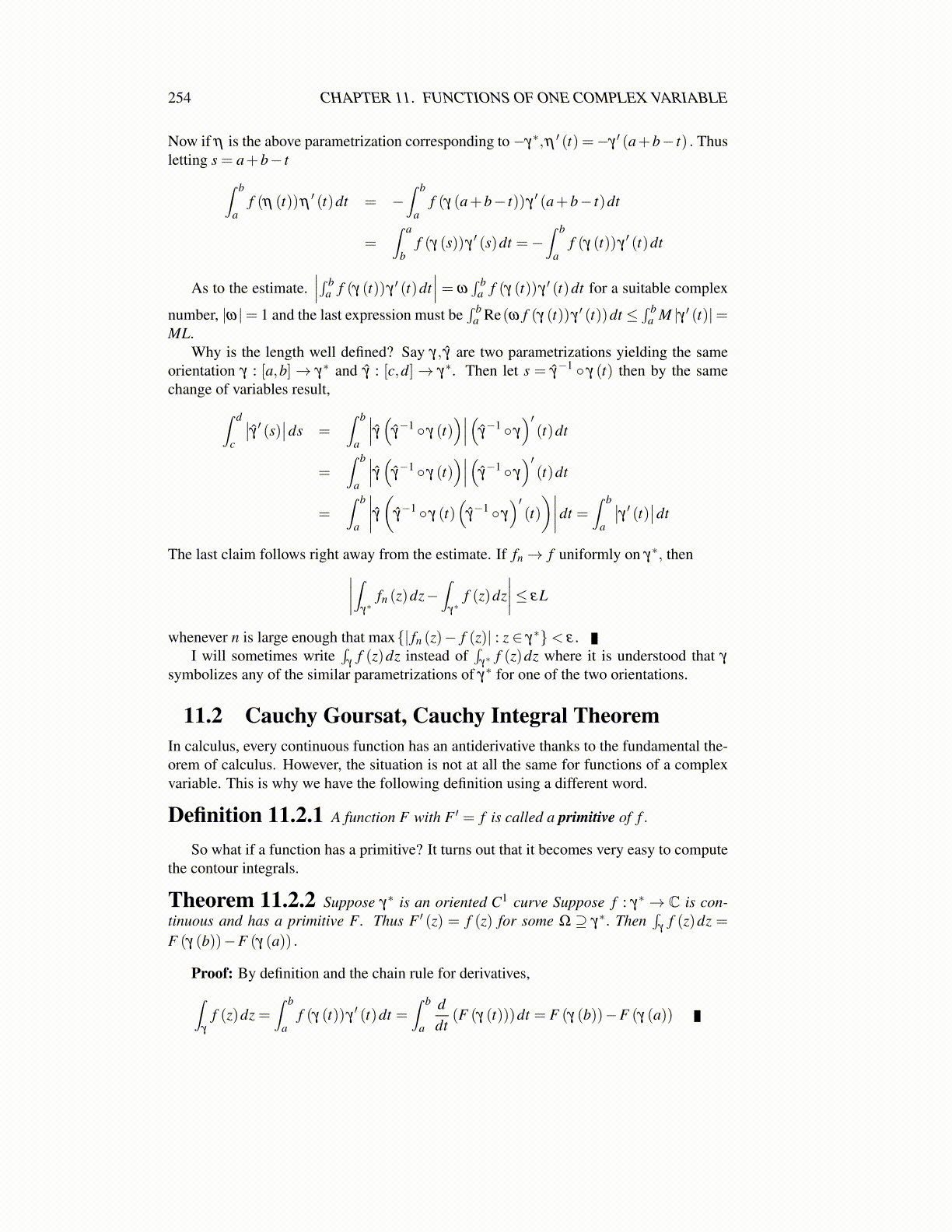
254 CHAPTER 11. FUNCTIONS OF ONE COMPLEX VARIABLE
where |o(w− z)| < ε |w− z| . Now observe that w → f (z) + f ′ (z)(w− z) has a primi-tive, namely, F (w) = f (z)w+ f ′ (z)(w− z)2 /2. Then, by Theorem 11.2.2,
∫∂Tk
f (w)dw =∫∂Tk
o(w− z)dw. From Theorem 11.1.6,
α
4k ≤∣∣∣∣∫
∂Tk
o(w− z)dw∣∣∣∣≤ εdiam(Tk)(length of ∂Tk)
≤ ε2−k (length of ∂T )diam(T )2−k,
and so α ≤ ε (length of ∂T )diam(T ) . Since ε is arbitrary, this shows α = 0, a contradic-tion. Thus
∫∂T f (w)dw = 0 as claimed.
Now we use this to construct a primitive.
Definition 11.2.4 A set Ω⊆ C is convex if, whenever z,w ∈Ω, it follows that tz+(1− t)w ∈ Ω for all t ∈ [0,1]. In other words, if two points are in Ω then so is the linesegment joining them.
Lemma 11.2.5 Suppose Ω is a convex set. Then so is the open set Ω+B(0,δ ) . HereΩ+B(0,δ )≡ ∪z∈Ω {z+B(0,δ )}= ∪z∈ΩB(z,δ ) .
Proof: First note that z+B(0,δ ) = B(z,δ ) because z+ y is in the left if and only ifz+ y− z ∈ B(0,δ ) if and only if z+ y ∈ B(z,δ ) and if w ∈ B(z,δ ) , then letting y = w− z,it follows that z+ y = w ∈ z+B(0,δ ). Thus Ω+B(0,δ ) is an open set because it is theunion of open sets. If z+ y, ẑ+ ŷ are in this set with y, ŷ in B(0,δ ) , and z, ẑ ∈ Ω, then ift ∈ [0,1] ,
t (z+ y)+(1− t)(ẑ+ ŷ) = (tz+(1− t) ẑ)+(ty+(1− t) ŷ)
The first term is in Ω and the second is in B(0,δ ) because both sets are convex.
Theorem 11.2.6 (Morera1) Let Ω be a convex open set and let f ′ (z) exist for allz ∈Ω. Then f has a primitive on Ω
Proof: Pick z0 ∈Ω. Define F (w)≡∫
γ(z0,w) f (u)du. Then by the Cauchy Goursat the-orem, and w ∈Ω, it follows that for |h| small enough,
F (w+h)−F (w)h
=1h
∫γ(w,w+h)
f (u)du =1h
∫ 1
0f (w+ th)hdt
=∫ 1
0f (w+ th)dt
which converges to f (w) due to the continuity of f at w.You can get by with less rather easily.
Definition 11.2.7 An open set U is star shaped if there is a point p ∈U called thestar center such that if z ∈U is any other point, then the line segment t→ p+ t (z− p) fort ∈ [0,1] is contained in U.
1Giancinto Morera 1856-1909. This theorem or one like it dates from around 1886